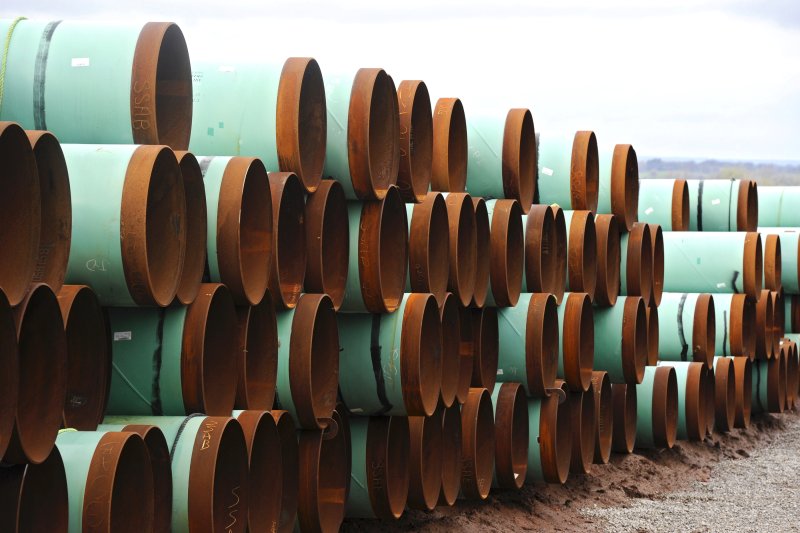A spokeswoman for TransCanada said a spill from the Keystone oil pipeline in South Dakota last year was larger than originally estimated. File Photo by Larry W. Smith/EPA
April 9 (UPI) -- The amount of oil released from the Keystone oil pipeline in South Dakota last year was twice as much as initially estimated, TransCanada said.
Robynn Tysver, a spokeswoman for the Canadian pipeline company, told the Aberdeen (South Dakota) American News that 9,700 barrels of oil was released from the Keystone pipeline in November. The company reported the release in rural South Dakota initially at about 5,000 barrels.
According to the newspaper, that makes the Keystone release in November the seventh-largest onshore oil spill since 2010. An Enbridge spill in Michigan in 2010, at more than 20,000 barrels, was the largest in recent history.
The federal Pipeline and Hazardous Materials Safety Administration said in a corrective action notice to TransCanada the release was likely the result of damage from when the section of the pipeline in South Dakota was originally installed.
"Preliminary information indicates the failure may have been caused by mechanical damage to the pipeline and coating associated with a weight installed on the pipeline in 2008," the report read. "Weights are placed on the pipeline in areas where water could potentially result in buoyancy concerns."
The Keystone pipeline, which carries a heavier type of oil from Canada, operated at a reduced pressure for much of late 2017 while the company worked on remediation efforts. A repair and restart plan was approved by the PHMSA with no objection late last year.
In one of his first moves in office, U.S. President Donald Trump signed executive action that facilitated the Keystone XL pipeline, an add-on to the existing infrastructure. TransCanada concluded the open season for commercial commitments to fill the Keystone XL pipeline on Jan. 18. With 500,000 barrels per day in firm commitments for the next 20 years, the company said the proposed project was contracted enough to proceed.
About 400 barrels were released from the original Keystone network in 2016. Federal investigators said that was from a "weld anomaly" on the pipeline and oil had been leaking from the pipeline at a rate of two drops per minute for an undetermined length of time.















